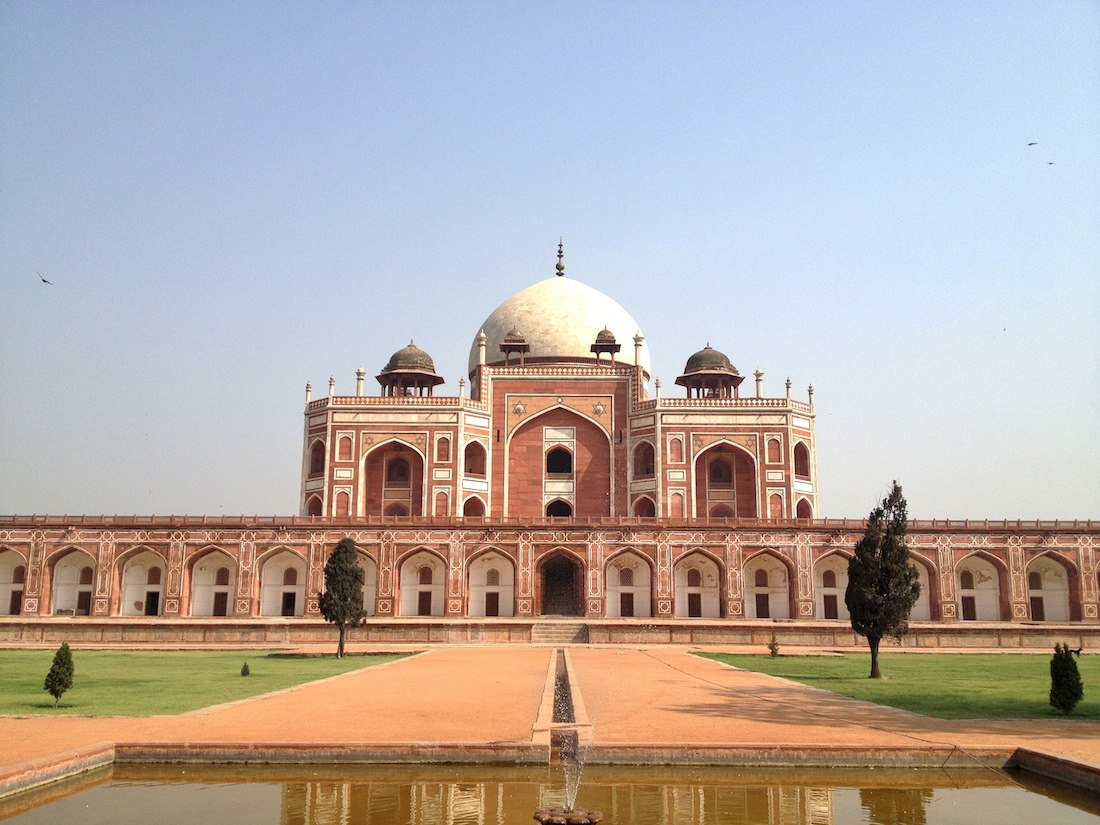Humayun’s tomb is the tomb of the Mughal Emperor Humayun in Delhi, India. The tomb was commissioned by Humayun’s first wife Bega Begum was so grieved over her husband’s death that she dedicated her life thenceforth to a sole purpose: the construction of the most magnificent mausoleum in the Empire, at a site near the Yamuna River in Delhi for the memorial of the late Emperor. The tomb was declared a UNESCO World Heritage Site in 1993 and since then has undergone extensive restoration work.
Humayun’s tomb was placed in the centre of a 30-acre (120,000 m2) Char Bagh Garden (Four Gardens), a Persian-style garden with a quadrilateral layout. The highly geometrical and enclosed Paradise garden is divided into four squares by paved walkways and two bisecting central water channels, reflecting the four rivers that flow in jannat, the Islamic concept of paradise. Each of the four square is further divided into smaller squares with pathways, creating into 36 squares in all, a design typical of later Mughal gardens.
Huayun’s tomb is open daily from sunrise to sunset and the entry fee is Rs 250 for foreigners ad Rs 10 for Indian citizens.






The exterior arch of Humayun’s Tomb…

The symbolically cut out mihrab facing west or Mecca, over the marble lattice screen.





